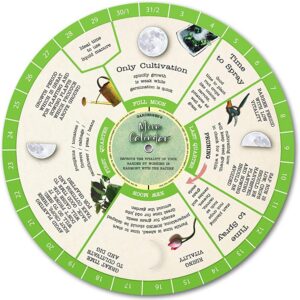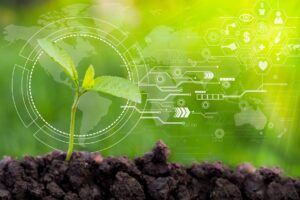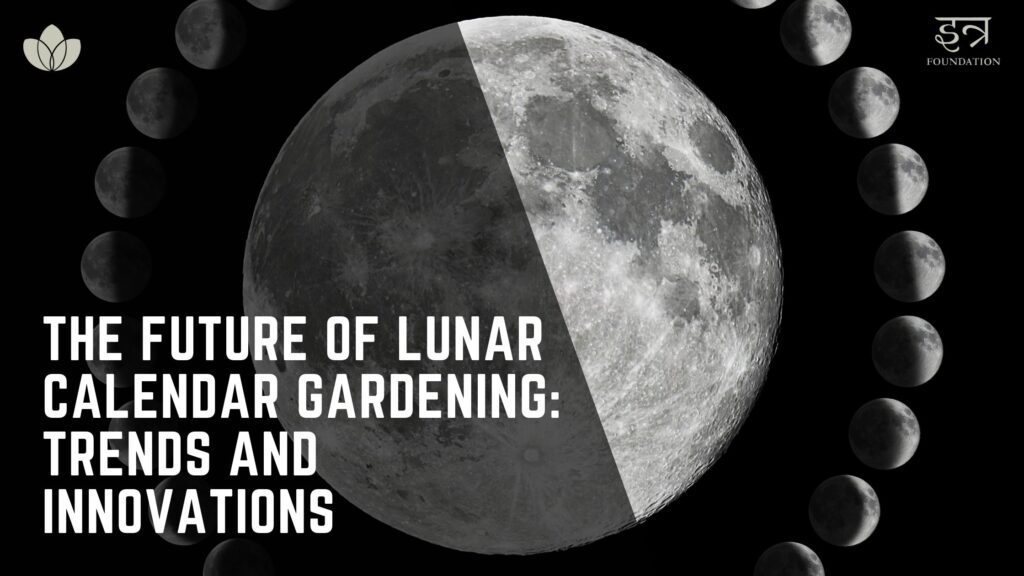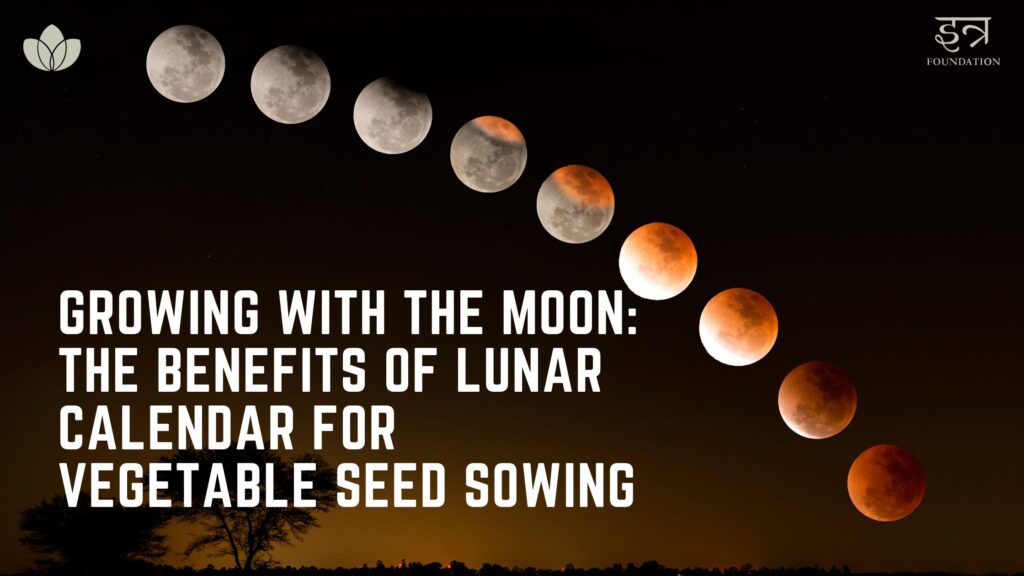Lunar gardening is a practice that involves aligning the planting and harvesting of crops with the phases of the moon. This ancient method of gardening has been used for centuries by different cultures around the world, with some claiming that it can improve the growth, health and flavor of plants. In today’s society, gardening has become more popular as people seek to reconnect with nature, improve their well-being and become more self-sufficient. As a result, lunar gardening has gained renewed interest, with many gardeners experimenting with different techniques and technologies to enhance their yields and minimize their environmental impact. In this blog, we will explore the history and benefits of lunar gardening, as well as some of the main trends and innovations that are shaping the future of this practice.

The Benefits of Lunar Calendar Gardening
Lunar calendar gardening is the practice of planting and harvesting crops based on the phases of the moon. The lunar calendar is divided into four phases: new moon, waxing moon, full moon, and waning moon. The new moon is considered the best time to plant crops that grow above ground, while the full moon is ideal for planting root crops. Lunar gardening is based on the belief that the gravitational pull of the moon affects the moisture levels in the soil, which in turn affects plant growth.
There are several benefits to lunar calendar gardening. One benefit is that it can lead to increased yields and healthier plants. By planting during the optimal lunar phases, gardeners can take advantage of the moon’s gravitational pull to promote healthy growth. Another benefit is that it can reduce the need for fertilizers and pesticides, as healthier plants are less susceptible to pests and diseases. Additionally, lunar gardening can help to promote biodiversity and sustainable agriculture practices.
While there is some scientific evidence to support the benefits of lunar gardening, much of the evidence is anecdotal. Some studies have shown that plants may be more responsive to lunar rhythms, but more research is needed to fully understand the mechanisms behind lunar gardening. Despite this, many gardeners continue to practice lunar calendar gardening and report positive results.
Trends in Lunar Calendar Gardening
- Growing Popularity of Lunar Gardening: Lunar gardening has been gaining popularity in recent years due to its holistic approach and focus on natural cycles. More and more people are embracing lunar gardening as a way to connect with nature and maximize their yields.
- Innovative Technologies and Tools for Lunar Gardening: The rise of technology has brought about innovative tools and technologies for lunar gardening. For example, some gardening tools are now specifically designed for lunar gardening, such as lunar planting calendars, which help gardeners determine the best times to plant, prune, and harvest their crops based on the lunar phases.
- Lunar Planting Apps and Websites: In addition to traditional lunar planting calendars, there are now various apps and websites available that can help gardeners with lunar gardening. These tools provide information on lunar phases, as well as personalized planting calendars based on the gardener’s location and crop preferences. Some apps also include reminders for specific gardening tasks based on the lunar cycle.
Innovations in Lunar Calendar Gardening

Biodynamic farming techniques and their impact on lunar gardening
Biodynamic farming is a holistic approach to agriculture that emphasizes the interrelationships between soil, plants, and animals. It incorporates lunar gardening principles, using the phases of the moon to guide planting, harvesting, and other agricultural practices. Biodynamic farming also emphasizes the use of organic and natural preparations to enhance soil fertility and plant health.
Lunar greenhouse technology
Lunar greenhouse technology involves growing plants in controlled environments that mimic the conditions found on the moon. This technology has been developed by NASA to provide food for astronauts on long space missions, but it also has potential applications on Earth. Lunar greenhouse technology can help growers overcome the challenges of harsh climates, limited space and resource constraints.
Lunar hydroponics and aeroponics
Hydroponics and aeroponics are methods of growing plants without soil, using nutrient-rich water and air instead. These methods have been adapted for lunar gardening by incorporating lunar planting principles. By adjusting the timing of nutrient delivery and other environmental factors, growers can optimize plant growth and yield according to the lunar phases. Lunar hydroponics and aeroponics have the potential to revolutionize urban agriculture and enable year-round growing in any location.
The Future of Lunar Calendar Gardening
Emerging trends and innovations in lunar gardening
-
- Integration of modern technology with traditional lunar gardening techniques
- Use of artificial intelligence and machine learning in lunar planting and crop management
- Development of lunar gardening systems for small-scale and urban agriculture
Potential for lunar gardening to become more mainstream
-
- Increased awareness and interest in sustainable and organic farming practices
- Growing popularity of natural remedies and alternative medicine, which often incorporate lunar gardening principles
- Shift towards local food production and consumption
The role of lunar gardening in sustainable agriculture and food production
-
-
- Reduced reliance on synthetic fertilizers and pesticides
- Conservation of water and other resources through optimized planting schedules and irrigation
- Increased biodiversity and ecosystem health through companion planting and other lunar gardening practices
-
In conclusion, lunar gardening has a rich history and a promising future. Planting according to the lunar phases has been shown to provide numerous benefits, from increased yield to improved plant health. As lunar gardening grows in popularity, innovative technologies and tools are emerging to make it easier and more accessible for everyone. With biodynamic farming techniques, lunar greenhouse technology, and lunar hydroponics and aeroponics, the potential for lunar gardening to become more mainstream is higher than ever. Lunar gardening can also play an important role in sustainable agriculture and food production, helping to reduce waste and improve efficiency. As we look to the future, it’s clear that lunar gardening will continue to be an important practice for those looking to connect with nature and promote healthy, sustainable living.




Pretty! This has been a really wonderful post. Many thanks for providing these details.
glad that you liked it
very informative articles or reviews at this time.
very informative articles or reviews at this time.
This is my first time pay a quick visit at here and i am really happy to read everthing at one place
I’m often to blogging and i really appreciate your content. The article has actually peaks my interest. I’m going to bookmark your web site and maintain checking for brand spanking new information.
This was beautiful Admin. Thank you for your reflections.
This is my first time pay a quick visit at here and i am really happy to read everthing at one place
we r glad. do follow us for more such blogs n interesting articles
I do not even understand how I ended up here, but I assumed this publish used to be great
I really like reading through a post that can make men and women think. Also, thank you for allowing me to comment!
we r glad . do follow us for more such interesting posts
Hi there to all, for the reason that I am genuinely keen of reading this website’s post to be updated on a regular basis. It carries pleasant stuff.
we r glad. follow us for more such interesting blogs
I very delighted to find this internet site on bing, just what I was searching for as well saved to fav